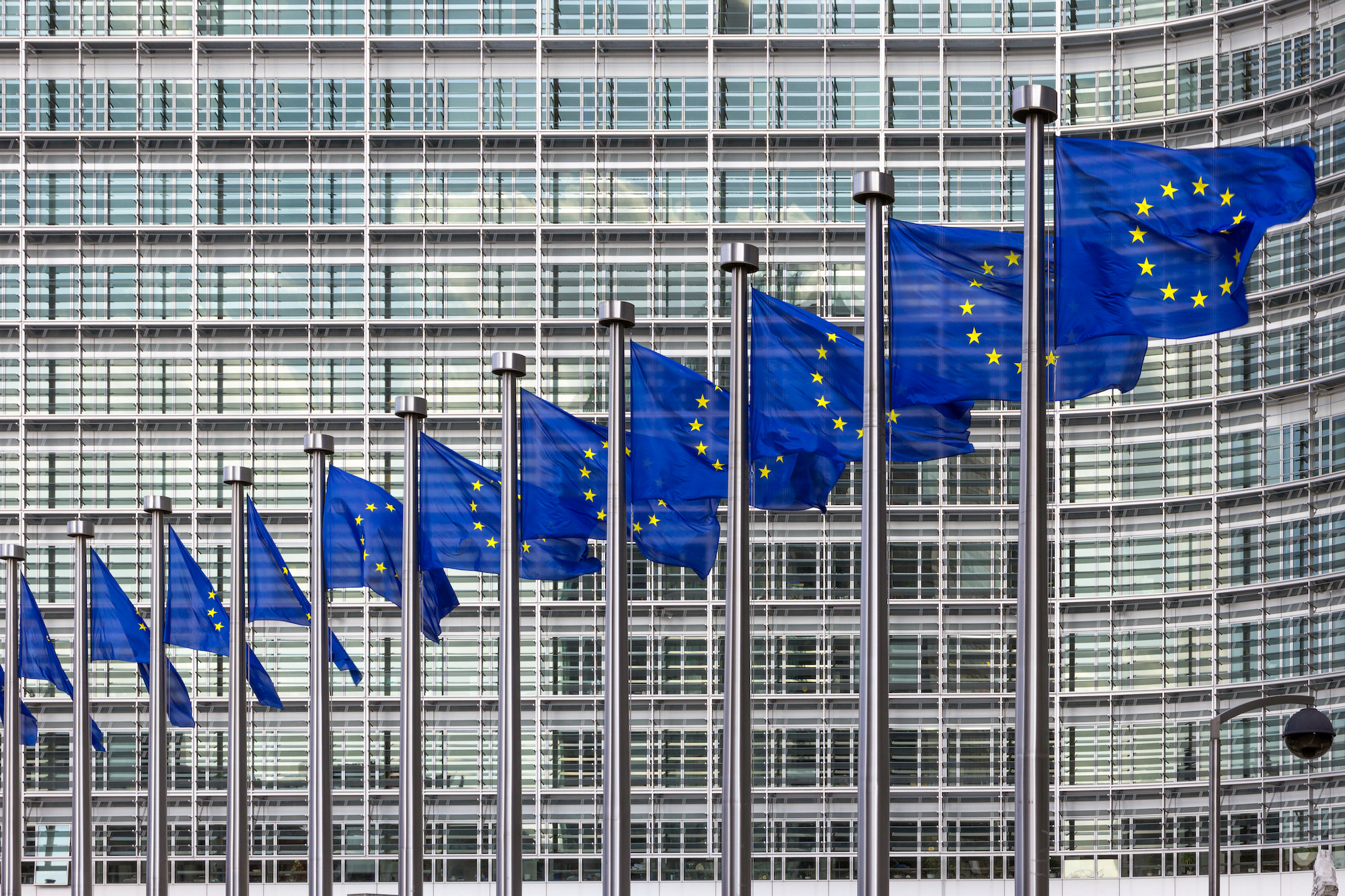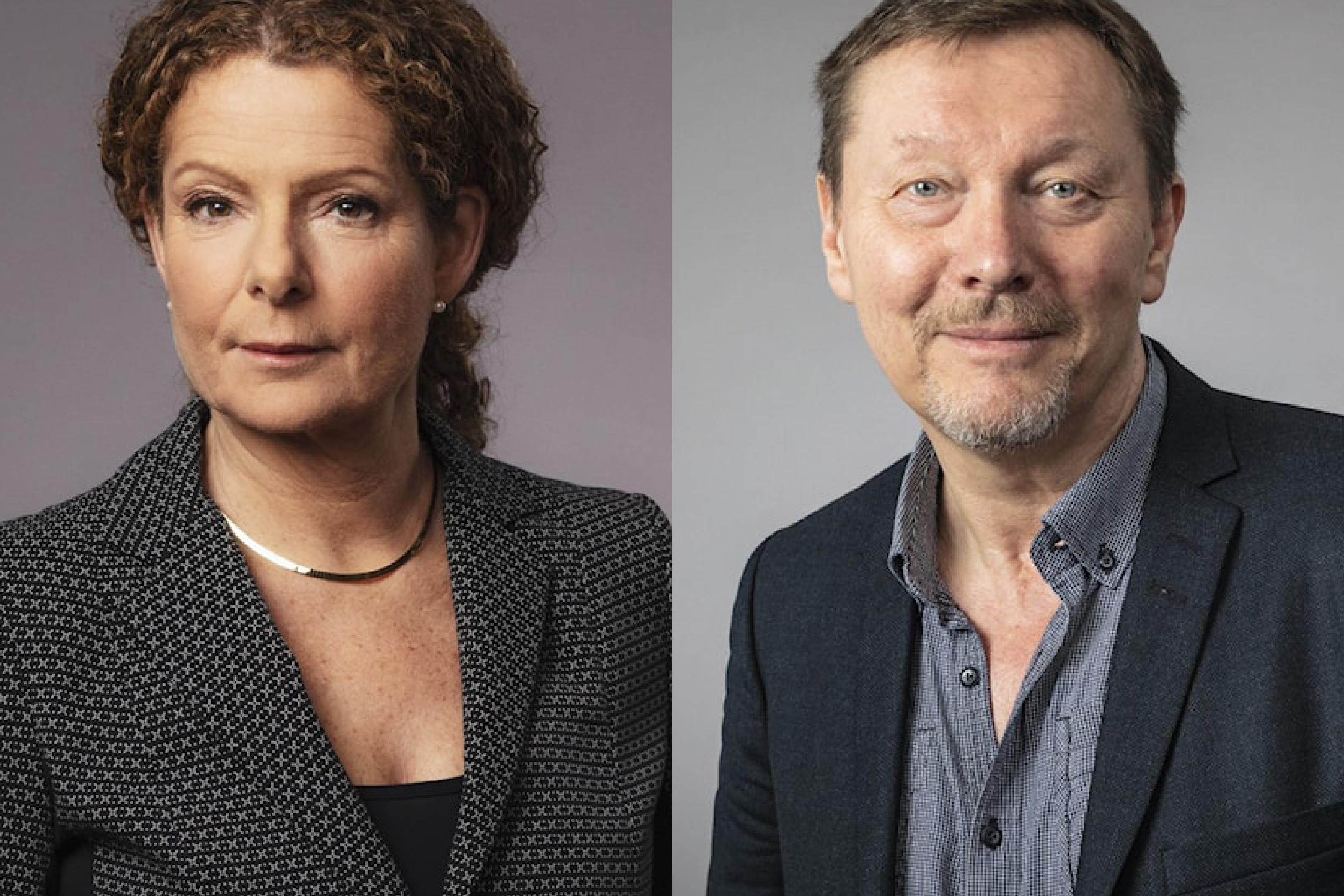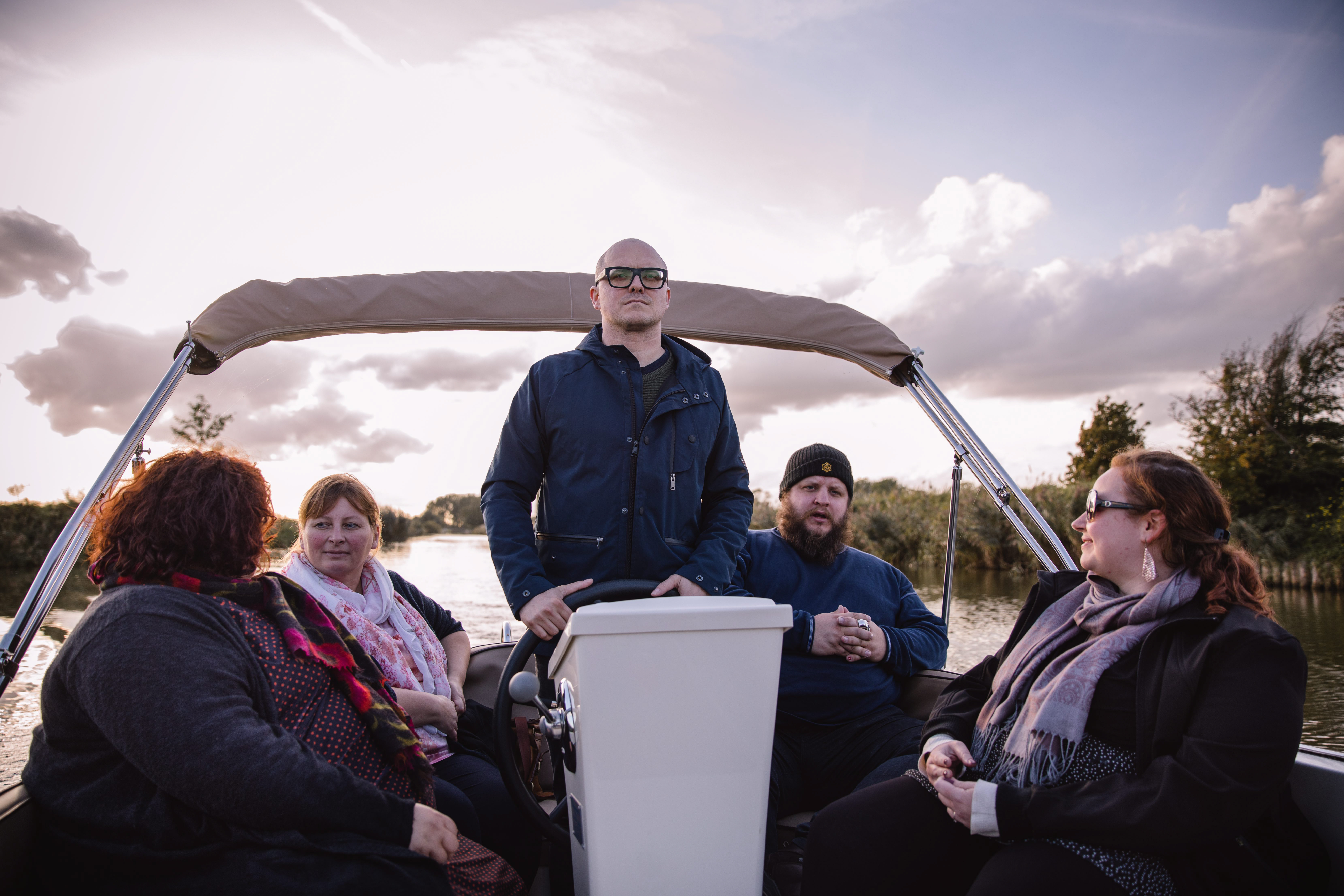INSIGHT
How the Flemish public broadcaster responds to the wishes and concerns of media users with Your VRT
26th January 2022
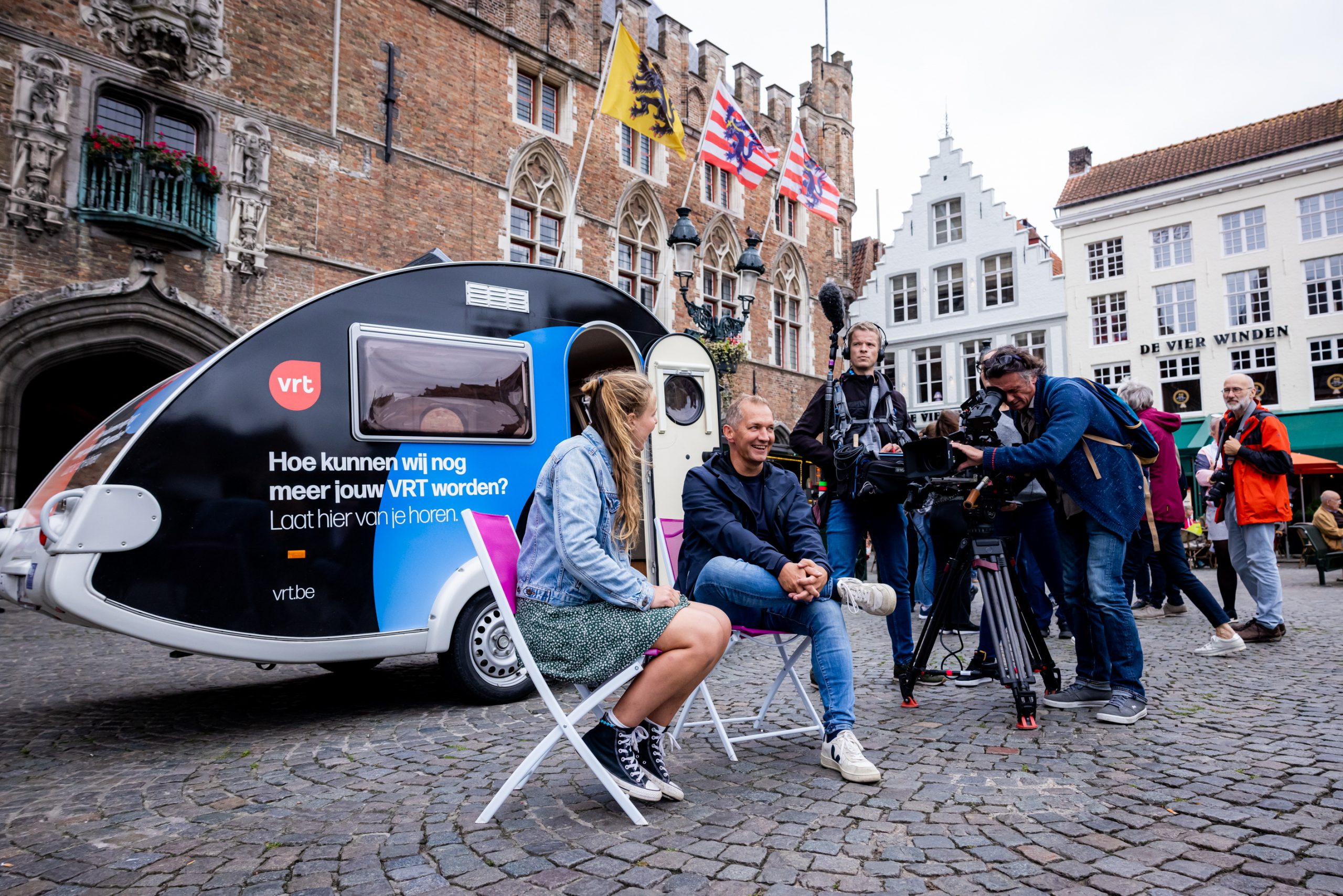
By Bob Vermeir, VRT Communications Manager & Corporate Spokesperson
What could we do better? What do our listeners, viewers, surfers and swipers expect of us? During the summer of 2021, we crisscrossed Flanders in search of answers to those questions. The results have been processed and we are now working on six action points.
The VRT is the public broadcaster of the Flemish community, the Dutch speaking part of Belgium. Those 6.5 million inhabitants of Flanders and Brussels are our shareholders. Every day, on radio, television and online we therefore provide them with the best possible content. And we do that very well: since the mid-1990s, the VRT has been not only been market leader in Flanders, but also a trend-setting example to other broadcasters. In recent years, however, there have been some problems. Our ratings are still very strong, but like all traditional media companies, we are subject to the ever-increasing pressures of rapidly changing media consumption. Several internal issues have also been detrimental to our reputation.
We are nevertheless more convinced than ever that a strong public broadcaster has a crucial role to play in our society. Such a broadcaster must be in touch with its audiences and be prominently and relevantly present on the preferred media platforms of users. That is why we traversed Flanders and Brussels to talk to and to listen to our users. We had already conducted a lot of market research, but for the first time we now asked the express question: ‘What could we do to become even more Your VRT?’
Why this campaign?
In September 2019, I attended the Public Broadcasters International Conference in Helsinki. There I met Hanna Stjärne, the CEO of Swedish TV channel SVT. Hanna had invited the Swedes to have a fika – a typically Swedish tea or coffee break, during which people relax and have a chat – to exchange ideas and to maintain their social contacts. Hanne wanted to know what the Swedes thought about SVT; she wanted to hear that from the Swedes themselves. Earlier, among EBU colleagues, I had already met Gabriel Byström, the head of Swedish Radio, who had spent a long time travelling around Sweden, in a mobile home, listening to radio consumers. Hanna and Gabriel’s testimonies inspired me.
“A strong public broadcaster has a crucial role to play in our society. Such a broadcaster must be in touch with its audiences and be prominently and relevantly present on the preferred media platforms of users.”
When our new CEO Frederik Delaplace set to work in 2020, he wanted to put public service media and the mother brand VRT firmly back on the map. Achieving that ambition starts with being humble and listening to your users: What do they think about VRT? What do they expect from their public broadcaster? What could be done better? What should be different? To answer these questions, we devised Your VRT (orig. Jouw VRT).
This public survey was fully in line with an explicit instruction in the VRT’s Management Agreement with the Flemish Community, which states: ‘The VRT feels and nurtures the heartbeat of Flanders. It does this on the basis of systematic research and the experience of its programme makers. Those latter must be involved as closely as possible in society and with an open mind.’
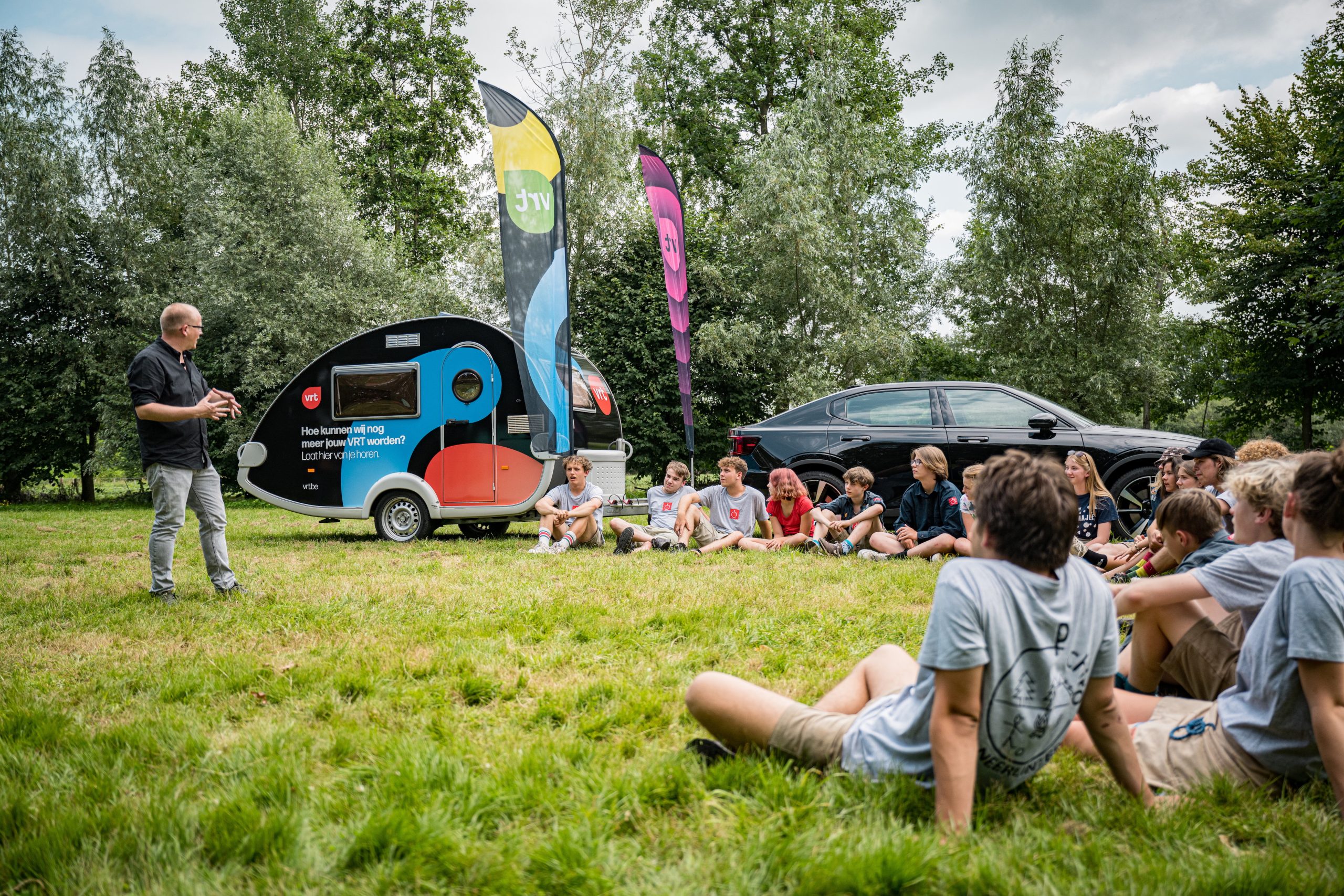
Various phases
Your VRT consisted of four steps:
-
- In collaboration with the VRT’s Research Department, independent research agency Indiville conducted a quantitative online survey of a representative sample of 2,620 Flemings from 12 to 75 years of age. This research became the scientific basis of our decision making.
- An identical survey was published on our website vrt.be. Anyone could fill it in and for some of the questions it was possible to give an open answer. We drew attention to this survey via a marketing and communication campaign, conducted on TV, radio, online, via the social media and in the written press.
- For three months we toured the country with a caravan. This instantly recognisable eye-catcher was combined with colourful and less institutional new branding, sixty radio and TV personalities, a camera crew and production staff. We set up camp in sixty different locations across our broadcasting area, from the forests of Limburg to the Belgian coast. We stopped, for instance, in both a church and a skate park. This tour encouraged many Flemings to complete our online survey, but we also asked people their opinions and listened to their answers on camera and at the microphone. We later used these on-the-spot responses to create content: sixty short films with our hosts and programme makers in interaction with the public that we broadcast on TV and made available online. Quite exceptional.
- Finally, we held five face-to-face chats with youngsters, in schools and in youth centres across Flanders. These chats were added because we found that youngsters were reluctant to complete a classic survey, but that their voice certainly needed to be heard and that it was important to listen to them. Youngsters, after all, are the target group that every traditional media company finds problematic.
Clear results
- Ultimately, almost 10,000 (!) people completed the survey on our website. Their answers confirmed the results of the earlier representative sample survey and gave us a reliable overall picture. We therefore drew our conclusions and worked out six action points. These were then included in the Long-term Plan (2022-2024) and the Business Plan for 2022.
- On the whole, the results of the Your VRT survey are very favourable: almost 8 out of 10 Flemings surveyed (77%) say they are satisfied with their public broadcaster. The survey did, however, reveal a number of points that could be improved: that the VRT still fails to connect optimally with youngsters, the low-skilled and people of foreign origin, for example. Our action plan should rectify this. The survey is a comprehensive tool that enables us to identify, understand and address the wishes and concerns of Flemish media users.
- We conveyed all of this to our users clearly and transparently. First we informed the Flemish parliament. We then used every available means of communication to inform the people of Flanders and Brussels of our findings openly and honestly. We held a press conference and also issued a press release, a long-read report of the results, interviews and messages on social media, an animation video, etc. Other news media picked up the results of the initiative.
- Besides providing answers, Your VRT also enhanced our reputation. For three months, our caravan became an iconic attribute that could be seen on the streets, on TV and in our campaign material. People got to meet us and they got to meet familiar TV personalities. They expressed their concerns and expectations, but also their enthusiasm, showering us with praise and positive reactions. Moreover, by so directly consulting with our audiences, we showed ourselves to be approachable and open to change.
- Our colleagues in-house also sensed that a new wind was blowing through the VRT, that we had a positive eye to the future and that we were ready to evolve along with media users. We stimulated this feeling by siting our caravan in the VRT grounds a few times and informing VRT employees about the project and our plans. We will continue the spread of information about JOUW VRT in the organisation over the coming months. Director of Public Value Karen Donders will be the face of this internal campaign, also to show staff that this issue is of top-level importance.
- Your VRT was a great success. We gained a wealth of valuable information and proved that – as a public broadcaster – we think it is important to get in the midst of our public, to get to know them and to build up a close relationship with them.
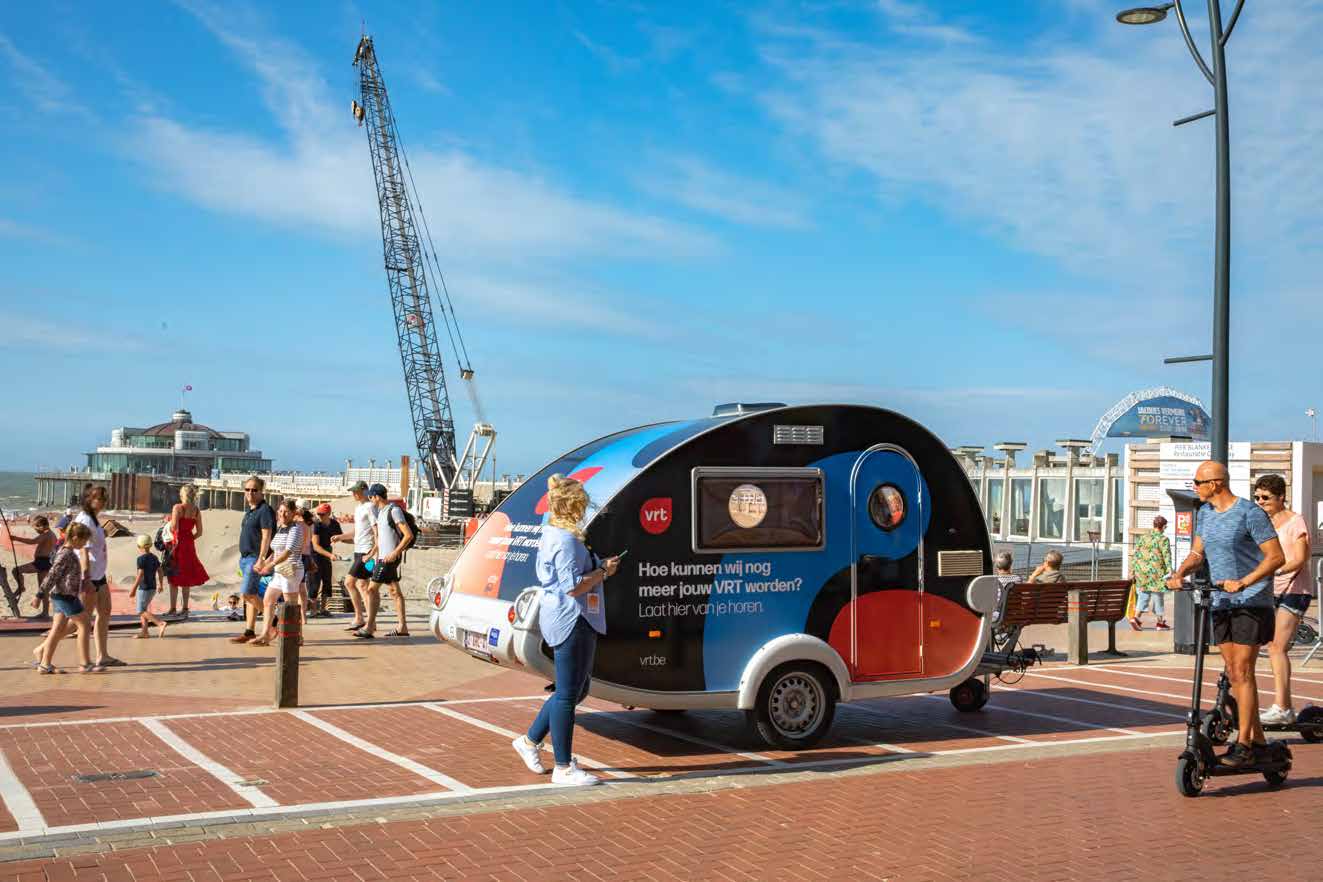
Six action points
The results of this major survey give us a good idea of what the Flemish people expect of their public broadcaster. We will now meet their expectations via six action points. We will:
- Continue to promote independent journalism and continue to invest in the fight against disinformation.
- Emotionally recharge the VRT brand and invest more in innovation, creativity and quality entertainment.
- Actively communicate about the VRT, about what it is and what we all do, and clearly demonstrate where the VRT makes a difference.
- Invest in tailored (digital) content.
- Focus on personalisation, with respect for privacy and without impairing the VRT’s DNA.
- Allow more diverse voices and opinions to be heard.
Interest from other broadcasters
I have meanwhile introduced our Your VRT project to several colleagues from other public broadcasters and they have shown a lot of interest. Among others, the LRT from Lithuania, the ORF from Austria, the RTS from Switzerland and the SWR from Germany have requested more information. The EBU has also organised a webinar about it.
Hopefully, we can also inspire colleagues to strengthen ties with our users. In the meantime, we are thinking about a follow up in 2022, specifically because Flemings said they appreciated our effort to reach out, travelling across Flanders, openly asking them about their opinion. Every good idea is welcome!
Bob Vermeir is the Communications Manager and Corporate Spokesperson for VRT.
Related Posts
16th September 2021
Insight: Promising steps to strengthen media freedom in Europe
The European Commission has presented a…
24th November 2020
Insight | Impartial media is necessary to avoid parallel realities
Swedish Radio CEO, Cilla Benkö, and…
16th July 2020
Insight | Why Public Media Will Not Survive Without Real Citizen Participation
In a dynamic and brutally competitive…
23rd November 2018
Best of PSM | VRT’s Taboe – ’Laughing at things you should not be laughing at’
How a mix of human interest stories and…
